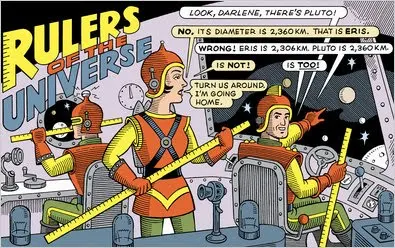
01.19.11
:
11-009
NanoSail-D Ejects: NASA Seeks Amateur Radio Operators' Aid to Listen for Beacon Signal
Amateur ham operators are asked to listen for the signal to verify NanoSail-D is operating. This information should be sent to the NanoSail-D dashboard at: http://nanosaild.engr.scu.edu/dashboard.htm. The NanoSail-D beacon signal can be found at 437.270 MHz.
The NanoSail-D science team is hopeful the nanosatellite is healthy and can complete its solar sail mission. After ejection, a timer within NanoSail-D begins a three-day countdown as the satellite orbits the Earth. Once the timer reaches zero, four booms will quickly deploy and the NanoSail-D sail will start to unfold to a 100-square-foot polymer sail. Within five seconds the sail fully unfurls.
"This is great news for our team. We’re anxious to hear the beacon which tells us that NanoSail-D is healthy and operating as planned," said Dean Alhorn, NanoSail-D principal investigator and aerospace engineer at the Marshall Center. "The science team is hopeful to see that NanoSail-D is operational and will be able to unfurl its solar sail."
On Dec. 6,, 2010, NASA triggered the planned ejection of NanoSail-D from FASTSAT. At that time, the team confirmed that the door successfully opened and data indicated a successful ejection. Upon further analysis, no evidence of NanoSail-D was identified in low-Earth orbit, leading the team to believe NanoSail-D remained inside FASTSAT.
The FASTSAT mission has continued to operate as planned with the five other scientific experiments operating nominally.
"We knew that the door opened and it was possible that NanoSail-D could eject on its own," said Mark Boudreaux, FASTSAT project manager at the Marshall Center. "What a pleasant surprise this morning when our flight operations team confirmed that NanoSail-D is now a free flyer."
If the deployment is successful, NanoSail-D will stay in low-Earth orbit between 70 and 120 days, depending on atmospheric conditions. NanoSail-D is designed to demonstrate deployment of a compact solar sail boom system that could lead to further development of this alternative solar sail propulsion technology and FASTSAT’s ability to eject a nano-satellite from a micro-satellite -- while avoiding re-contact with the FASTSAT satellite bus.
Follow the NanoSail-D mission operation on Twitter at:
For additional information on the timeline of the NanoSail-D deployment visit:
To learn more about FASTSAT and the NanoSail-D missions visit:
- end -
text-only version of this release




































